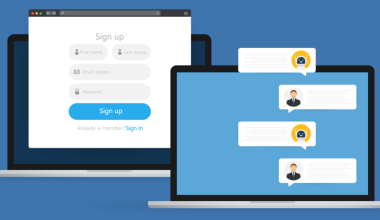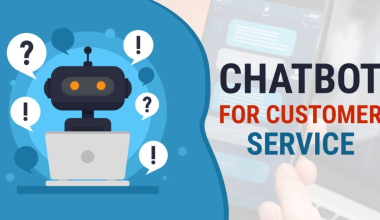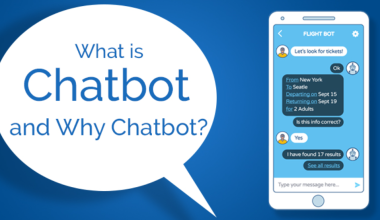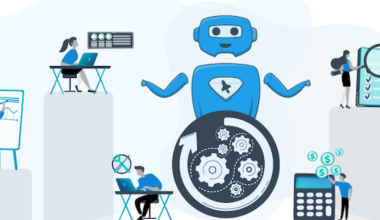Chatbots and Conversational AI have become integral parts of our digital interactions, acting as virtual conversational agents and revolutionizing how businesses engage with customers. This is a comparative study of Chatbot vs Conversational AI, also you can easily decide which one is best for you.
These technologies, designed to interact with users through text or speech, have evolved significantly. Chatbots operate based on predefined rules, while Conversational AI goes beyond, utilizing advanced AI, machine learning, and natural language processing to offer personalized, context-aware interactions.
What are Chatbots?
Chatbots are software programs designed to engage in text or text-to-speech conversations with users online, effectively acting as virtual conversational agents. They function by following a predefined set of rules and scripted responses.
These bots interact with users by analyzing their input queries and generating corresponding responses based on their programmed instructions.

Simple chatbots operate within a limited scope, handling basic tasks such as responding to common FAQs or carrying out straightforward actions. They rely on rule-based programming, matching user inquiries to predefined responses. Learn more about them in this chatbot guide for newbies.
However, their limitations become apparent when faced with unfamiliar requests or queries that fall outside their programmed instructions. In such instances, these chatbots may respond with a generic “Sorry, I don’t understand” message.
For larger enterprises like banks, insurance firms, telecommunication companies, etc., chatbots require artificial intelligence capabilities to comprehend human language intricacies and perform more complex tasks. This evolution within chatbots is referred to as conversational AI, enabling more sophisticated interactions, which we’ll discuss shortly.
Examples of chatbots include WeChat’s Xiaoice, and customer service chatbots found on websites or social media platforms like Facebook, typically operating based on predefined rules.
Benefits & Limitatons
The benefits of chatbots include their availability 24/7, providing instant responses to customer queries, cost-efficiency by reducing the need for human customer service representatives, and scalability to handle multiple conversations simultaneously.
But there are limitations as well! Rule-based chatbots can only respond within their programmed parameters, struggling when faced with queries they aren’t programmed to handle. Additionally, most chatbots cannot personalize responses or understand user context.
What is a Conversational AI?
Conversational AI refers to a sophisticated technology that encompasses AI-driven systems, tools, and applications used in various interfaces such as chatbots, voice assistants (like Amazon’s Alexa or Apple’s Siri), and conversational platforms. It focuses on automating communication and creating personalized user experiences on a larger scale.

Unlike traditional chatbots that primarily rely on text-based interactions, Conversational AI expands its scope to include voice-based interactions and other conversational interfaces. It utilizes advanced technologies like Natural Language Processing (NLP) and Machine Learning (ML) to comprehend, process, and respond to human language naturally and engagingly.
Examples of Conversational AI systems include popular virtual assistants like Apple’s Siri, Google’s Assistant, Amazon’s Alexa, and Microsoft’s Cortana, showcasing the capabilities of AI in understanding and responding to human queries through natural language interactions.
Benefits & Limitations
It excels in understanding complex queries, interpreting user intents accurately, and delivering relevant responses. They can remember past interactions, using that context to offer personalized experiences. Advancements in Natural Language Processing enable these systems to simulate human-like interactions, greatly enhancing user experiences.
Despite the benefits, there are some limitations and challenges associated with it. Developing and implementing a Conversational AI system can be complex and costly due to the need for significant data, advanced machine learning models, and ongoing fine-tuning.
Moreover, these systems often require access to user data for providing personalized responses, raising concerns about data privacy and security.
Difference Between Chatbots vs Conversational AI
The distinction between basic chatbots and Conversational AI lies in their capabilities.
While chatbots typically operate based on predefined responses, Conversational AI systems can genuinely understand conversation context, allowing them to provide more natural, contextually relevant, and personalized replies.
These systems possess the ability to interpret human emotions and nuances within a conversation, enabling them to engage in more sophisticated and meaningful dialogues.
Here are the key differences between Chatbots and Conversational AI:

If you need more information, let’s compare both technologies on different factors:
- Interaction style: Chatbots rely on predefined responses based on specific keywords or phrases to interact with users. Conversational AI, however, engages in more nuanced, personalized conversations by understanding context and offering tailored responses.
- Understanding Intent: Chatbots have a limited grasp of user intent, often sticking to predefined rules. On the other hand, Conversational AI utilizes advanced Natural Language Processing (NLP) to comprehend user intent and context better, enabling more accurate and context-aware responses.
- Learning abilities: Chatbots function based on rules and have limited learning capabilities. In contrast, Conversational AI employs machine learning techniques, allowing it to continuously improve and evolve its responses based on interactions and data.
- Channel Support: Chatbots often operate within a single channel, whereas Conversational AI is designed to support interactions across multiple channels, providing a seamless experience for users across various platforms.
- Multilingual capabilities: Chatbots typically have limited language support, while Conversational AI is designed to handle multiple languages, making it more adaptable and inclusive for a diverse user base.
- Personalization: Chatbots offer basic and fixed responses, lacking in personalization. On the other hand, Conversational AI excels in personalization, tailoring interactions to individual preferences and needs.
- Scalability: Chatbots have limited scalability due to their reliance on fixed rules. In contrast, Conversational AI is highly scalable and efficient in managing various interactions, making it suitable for handling increased volumes of queries.
- User Authentication: Chatbots typically lack features for user authentication. On the contrary, Conversational AI enables user authentication, providing a more secure and personalized experience for users.
- Adaptability: Chatbots have limited adaptability and struggle when faced with commands outside their predefined set. Conversely, Conversational AI adapts by understanding context, allowing it to handle diverse queries beyond a predetermined scope.
- Industry Applicability: Chatbots are commonly used in industries where standard query handling suffices, while Conversational AI finds applications across various industries due to its customization capabilities and adaptability to different scenarios.
Which is Right for Your Business?
Now, that you have an idea of which technology is better, it’s time to implement it. So, let’s find out which of them, Chatbot or Conversational A, is better for different types of businesses:
Customer Service: Chatbot
Chatbots are extensively used in customer service to handle common queries, FAQs, and basic support tasks. They provide instant responses to customer inquiries, guiding users through troubleshooting processes, account inquiries, and more.
These bots assist in resolving routine issues efficiently, freeing up human agents to focus on more complex problems. There are so many advantages of having a chatbot for customer service.
E-commerce and Sales Assistance: Chatbot
In the realm of e-commerce, chatbots aid customers in product search, recommendations, and purchasing processes. They can provide information about products, assist in comparing options, offer personalized recommendations based on user preferences, and even facilitate the checkout process.
E-commerce chatbots enhance user experience and drive sales by providing immediate assistance and guidance throughout the buying journey. You can increase your conversion rate using Chatbots as well.
Appointment Scheduling & Booking: Chatbot
Chatbots are utilized in various industries, including healthcare, hospitality, and service-based businesses, to schedule appointments, book reservations, and manage bookings. These bots streamline the booking process by interacting with users to confirm availability, select dates, and reserve slots, offering convenience and efficiency in managing appointments or reservations.
Banking Services: Conversational AI
In the finance industry, Conversational AI is employed to provide personalized financial advice, assist in managing accounts, offer investment insights, and guide users through banking services.
These AI-driven systems use customer data to provide tailored recommendations, help with budgeting, and offer insights into financial planning, creating a more engaging and personalized banking experience.
Multilingual Support: Conversational AI
Conversational AI facilitates language translation services and multilingual support across various platforms. It can interpret and respond in multiple languages, aiding communication barriers and enhancing accessibility for global users.
This use case is particularly valuable in customer service, travel, and global business operations, allowing seamless interactions and understanding between users speaking different languages.
So, What’s the Future?
The future of bots is poised to be a transformative force across various industries and human interactions, driven by AI, machine learning, and natural language processing. AI is going to be a big thing for chatbots. You can create AI chatbots easily using ChatClient as well.

The amalgamation of bots with AI and machine learning will enable humans to accomplish tasks more efficiently by leveraging the capabilities of intelligent automation. This collaboration aims to achieve feats that neither humans nor machines could accomplish alone.
Future bot platforms will focus on deeper human psychology, inferring and responding to subtle cues in human interactions, whether textual, voice-based, or even through facial and gestural expressions.
Conversations with bots will become more natural and integrated into daily life, accessed through discreet devices or augmented reality settings. These bots will serve as trusted digital assistants, handling various tasks, managing personal information, and customizing experiences according to user preferences.
Bots will significantly impact customer service and engagement. They’ll be integrated into various customer service channels to handle a vast percentage of inquiries and tasks.
Takeaways
In the world of digital communication, chatbots and Conversational AI are transforming user experiences. The future holds promise for these technologies, enhancing collaborations between humans and machines and revolutionizing customer service, engagement, and the overall digital landscape.





